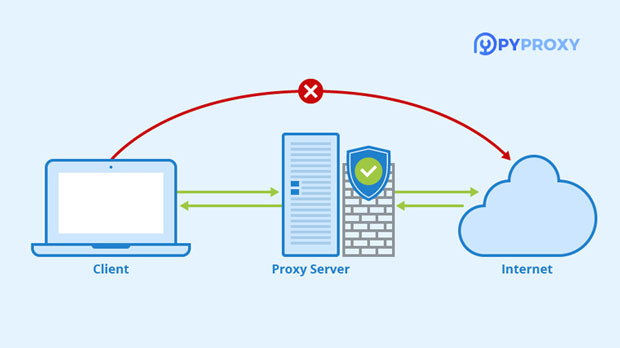In the world of internet proxies, businesses often face the dilemma of choosing between Static ISPs and Data Center proxies. The right choice can significantly impact performance, reliability, and overall user experience. In this article, we will delve into an in-depth comparison between static ISP proxies and Data Center proxies based on enterprise-level real-world testing. We will analyze both in terms of speed, stability, anonymity, scalability, and cost-effectiveness. By the end of this article, businesses will have a clearer understanding of which proxy solution aligns best with their needs. 1. Introduction to Proxies: Static ISP vs Data CenterWhen we talk about proxies, we are referring to intermediary servers that mask a user's IP address and make requests to websites on their behalf. These proxies are widely used for various purposes, including enhancing security, increasing anonymity, and bypassing geo-restrictions. There are primarily two categories of proxies: Static ISP proxies and Data Center proxies.- Static ISP Proxies: These are IP addresses assigned by Internet Service Providers (ISPs) that are consistent over time. Static means the IP remains the same, even if the user disconnects and reconnects. These proxies are often perceived as more "natural" by websites due to their association with real-world ISPs.- Data Center Proxies: These proxies come from data centers rather than residential ISPs. They are created for specific use cases, often involving large-scale operations, such as web scraping, bulk purchasing, or bypassing geographical restrictions. Data center proxies typically have higher speed but can be more easily detected by advanced anti-proxy mechanisms.2. Performance: Speed and StabilityOne of the primary factors influencing the choice between Static ISP proxies and Data Center proxies is performance. Both types of proxies offer distinct advantages and challenges in terms of speed and stability.- Static ISP Proxies: These proxies offer stable connections, especially for long-term usage, as the IP address remains unchanged. They are also less likely to be flagged or blocked by websites due to their similarity to real user connections. However, their speed can vary depending on the quality of the ISP and the location of the server.- Data Center Proxies: Known for their high-speed performance, data center proxies excel in scenarios requiring rapid requests, such as web scraping and automated tasks. They typically offer lower latency and faster connections compared to static ISP proxies. However, they may sometimes face stability issues, particularly if the proxy service is overloaded or the provider has a low-quality infrastructure.In terms of speed and stability, data center proxies tend to have the edge, especially in scenarios that require handling large amounts of requests quickly. Static ISP proxies, however, provide greater stability and less likelihood of being blocked.3. Anonymity and DetectionAnonymity and the ability to avoid detection by websites are critical aspects of proxy performance. Some proxies are more easily detectable than others, and this can impact their effectiveness in certain use cases.- Static ISP Proxies: These proxies are usually seen as more authentic by websites. Since they are associated with real ISPs, their traffic appears more like that of a normal user. This makes static ISP proxies less likely to be detected by anti-proxy systems, providing a higher level of anonymity.- Data Center Proxies: While data center proxies provide excellent speed, they are often seen as suspicious by websites due to their association with data centers rather than real ISPs. Websites may flag or block them more easily, especially if they detect large volumes of requests coming from a specific data center IP range. Advanced anti-proxy mechanisms, such as CAPTCHA systems and IP reputation checks, are often used to identify and block data center proxies.From an anonymity perspective, static ISP proxies hold the advantage, especially for use cases where avoiding detection is a priority.4. Scalability and FlexibilityWhen it comes to scaling operations, businesses need proxies that can handle large volumes of requests without compromising performance. Here, both proxy types offer distinct advantages.- Static ISP Proxies: While static ISP proxies are great for maintaining a consistent IP address over time, they may be less flexible in terms of scalability. Since these proxies are tied to individual ISPs, obtaining large numbers of static proxies may be challenging, particularly if a business requires global coverage across multiple regions.- Data Center Proxies: Data center proxies shine in scalability. They are typically available in large quantities and can be easily scaled to accommodate the needs of businesses, particularly those involved in large-scale operations. With a wide range of IP address options from multiple geographical regions, data center proxies offer greater flexibility and adaptability for businesses with extensive needs.In terms of scalability, data center proxies have the upper hand due to their availability in large quantities and the ease of adapting to large-scale needs.5. Cost-EffectivenessCost is a critical factor for businesses that require proxy services. Both Static ISP and Data Center proxies come with different pricing structures, which can impact the decision-making process.- Static ISP Proxies: These proxies tend to be more expensive due to their association with real ISPs. The process of acquiring a static IP from an ISP involves more infrastructure, and as a result, prices can be higher. Businesses that require static ISP proxies for long-term use may find the cost prohibitive, especially if they need large quantities.- Data Center Proxies: On the other hand, data center proxies are generally more affordable. Since they are hosted in data centers and don't require real ISP infrastructure, they tend to be less expensive than static ISP proxies. This makes them a more cost-effective solution for businesses with high-volume proxy needs, such as web scraping and automation.In terms of cost-effectiveness, data center proxies are the clear winner, particularly for businesses operating on a large scale.6. Which One Should You Choose?The decision between Static ISP proxies and Data Center proxies depends largely on the specific requirements of the business.- If anonymity and avoiding detection are paramount (such as for SEO purposes, managing multiple accounts, or data collection), Static ISP proxies are the better option.- If speed, scalability, and cost-effectiveness are the main priorities (such as for web scraping, automation, or large-scale tasks), Data Center proxies are the preferred choice.In most cases, businesses will need to balance between these two options, considering factors like budget, the nature of their tasks, and their specific technical requirements.To sum up, both Static ISP proxies and Data Center proxies have their respective strengths and weaknesses. Static ISP proxies excel in terms of anonymity and avoiding detection, making them ideal for use cases that require a more natural, long-term presence on the internet. On the other hand, Data Center proxies are faster, more scalable, and cost-effective, making them a better choice for high-volume, performance-driven tasks. Ultimately, the decision depends on the specific needs and priorities of the business, and both options have their place in the world of enterprise-level proxy usage.
Nov 14, 2025



































































